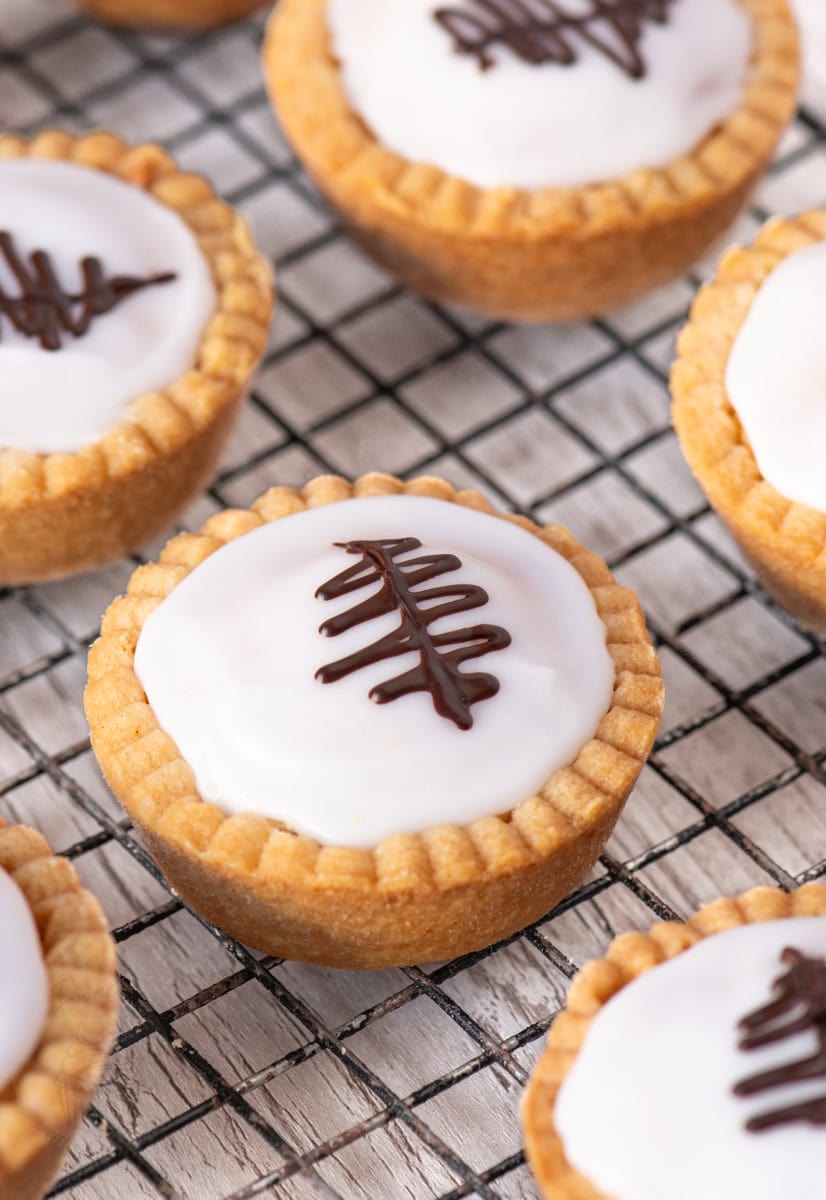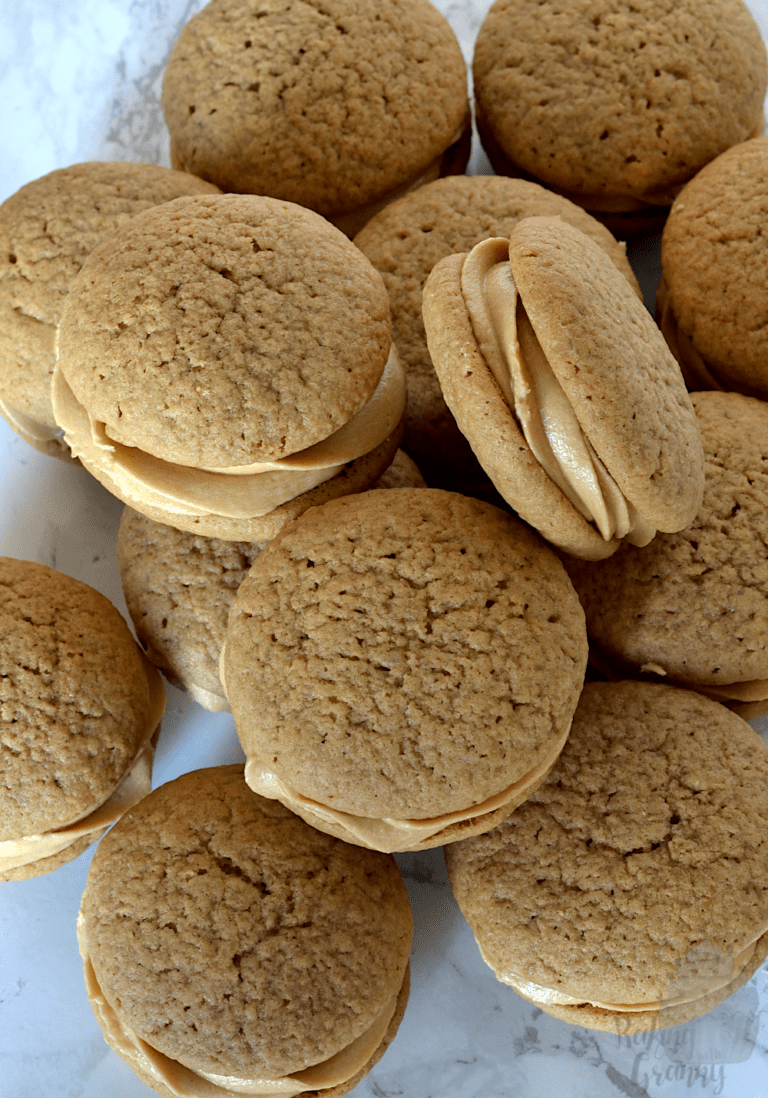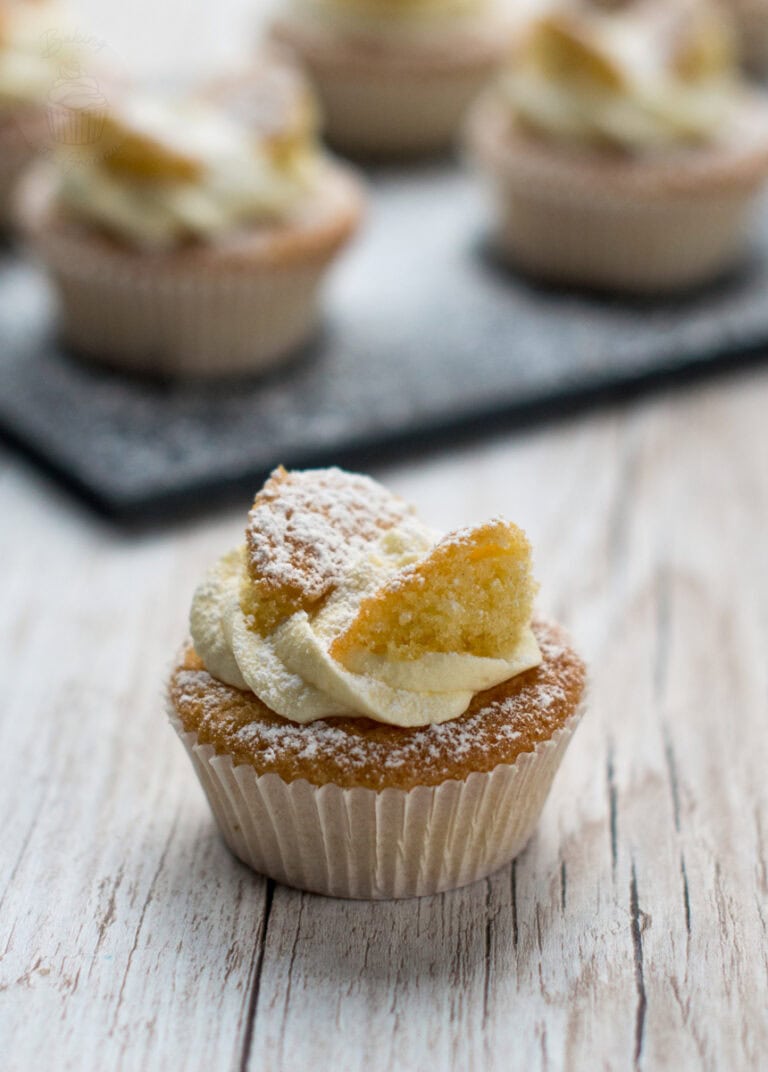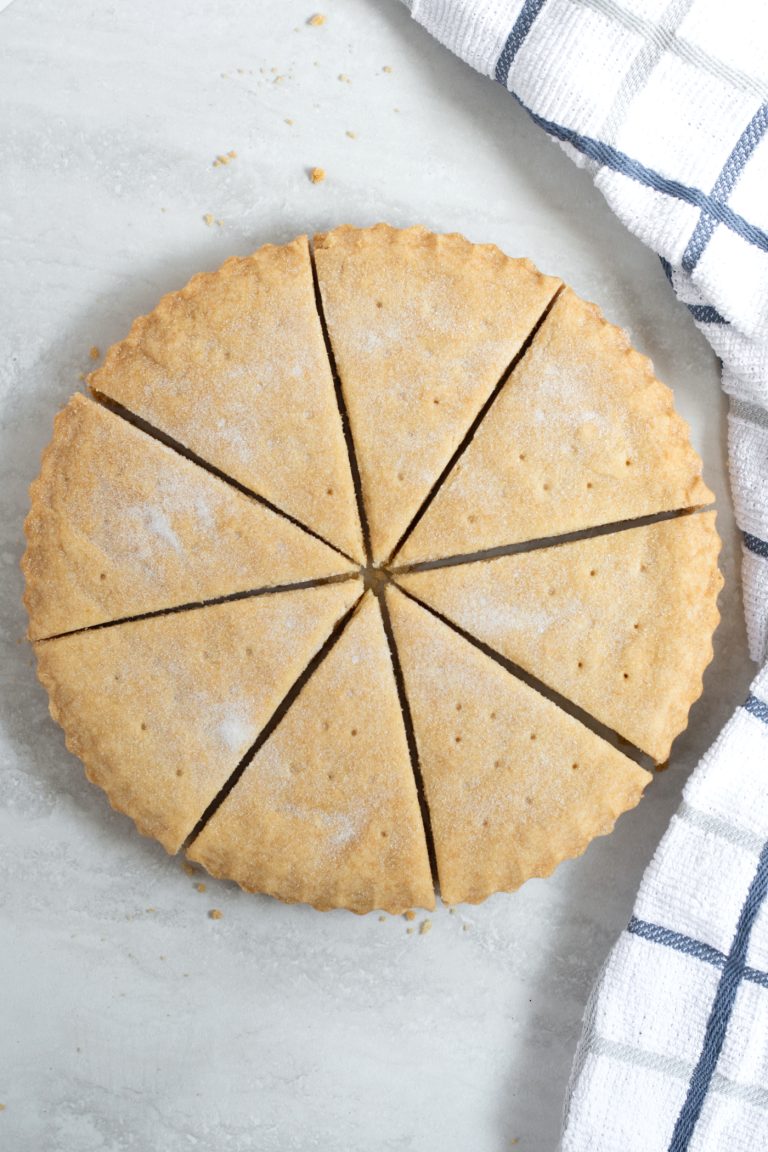Fern Cakes
Despite the name, Fern Cakes are actually a classic Scottish tart. Sweet pastry case, filled with a layer of jam, almond frangipane sponge, and a white icing and feathered chocolate top. They’re the kind of bake you’ll find in any Scottish supermarket – and now you can make them at home, too!
As seen in my debut cookbook, Scottish Bakes.
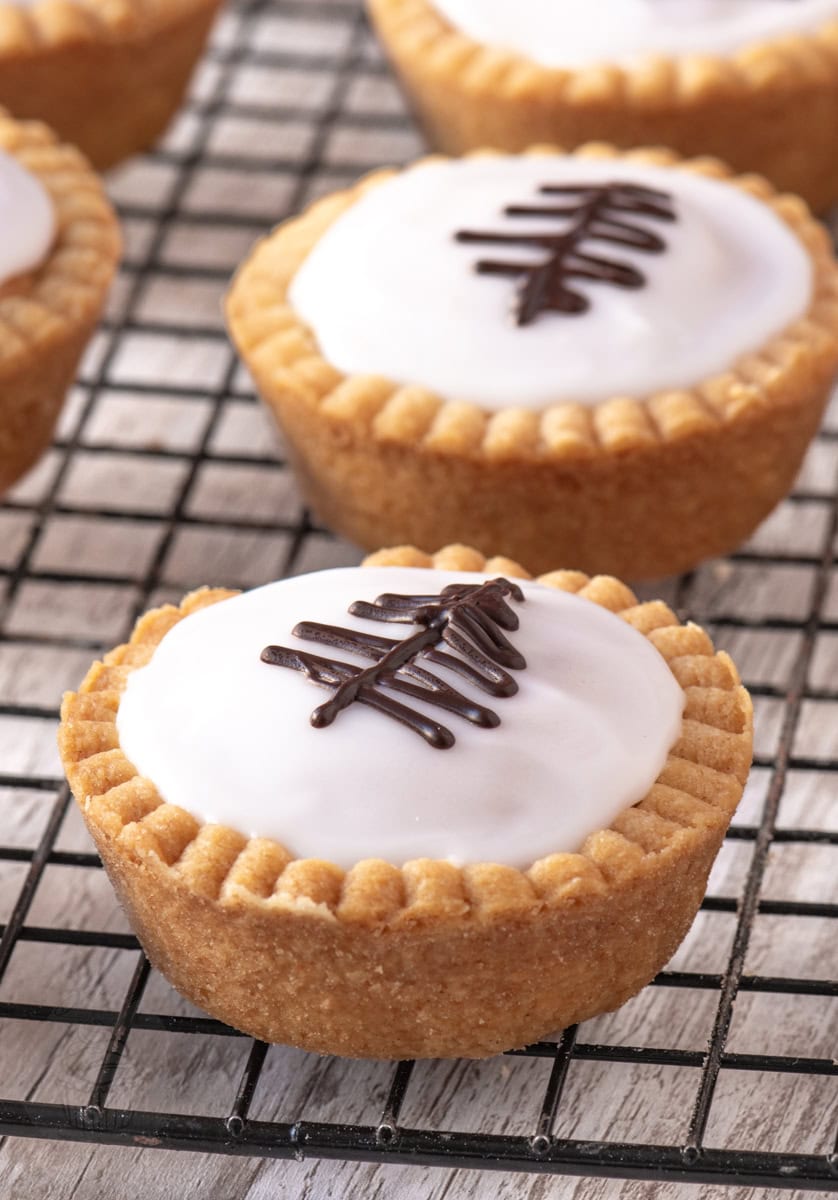
Have you heard of Fern Cakes? I actually hadn’t until someone messaged me a couple of years ago asking if I had a recipe for them. Since then, I’ve had quite a few requests for a traditional Fern Cakes recipe.
Fern Cakes, despite the name, are not actually a cake. They are, in fact, a little Scottish tart. I think they’re quite comparable to a bakewell tart, but with a nice layer of icing on top – we Scots do like our sweet treats extra sweet. And they get their name from the little swirlly detail on top, which resembles a wee fern leaf.
You will often find Fern Cakes in Scottish supermarkets, as part of the wee four-piece tart tray, alongside a Pineapple Tart, a Raspberry Tart and a Caramel Cup. Which, incidentally, alongside this recipe for Fern Cakes, are all recipes in my debut cookbook, Scottish Bakes.
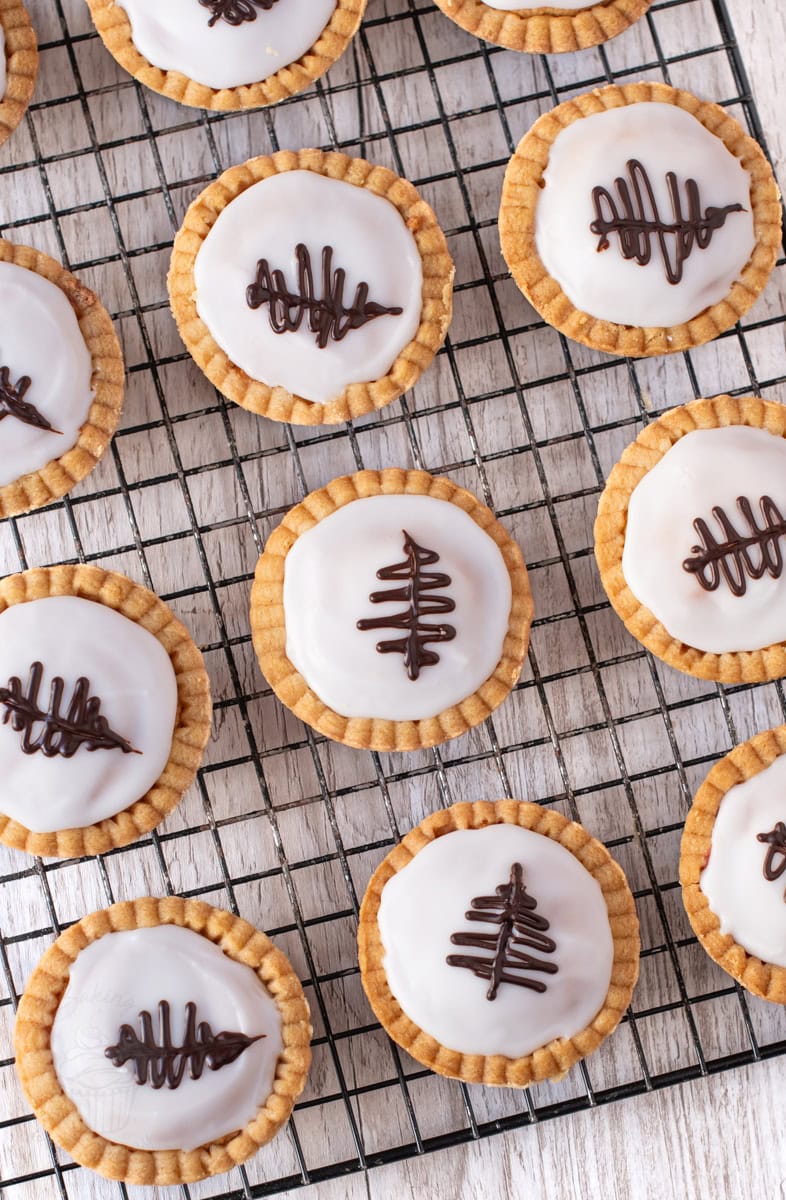
Top Tips for Scottish Fern Cakes:
• Use block margarine or butter: For the pastry. Softer spreads won’t hold their shape as well and can make the dough greasy and tricky to handle.
• Chill the pastry dough: This makes it easier to work with and helps prevent shrinkage during baking.
• Don’t skip the blind bake!: It stops the pastry going soggy when the jam and sponge are added. No one wants a tart with a soggy bottom.
A teaspoon of jam is just enough: Too much and it can bubble up and spill over during baking. Not only will this mean your Fern Cakes won’t look as pretty, but it will also mean the jam will act like glue and stick them to the tin.
• Leave space for the frangipane to rise: Fill the cases about two-thirds full to stop the sponge from overflowing. You want a slight gap on top and around the pastry edge, allowing your icing to sit nicely on top.
• Let the Fern Cakes cool completely before icing: Warm frangipane sponge and pastry will melt the icing and chocolate, making things a bit messy.
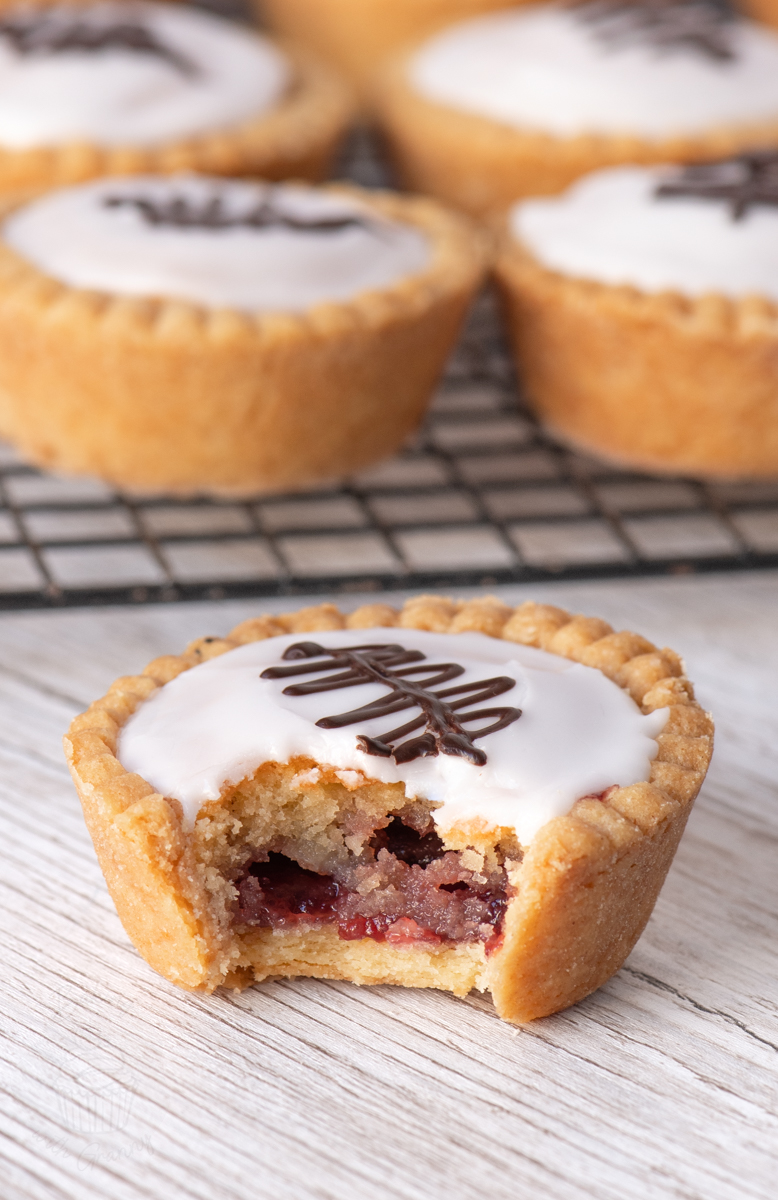
Save this recipe!
Want to save this recipe for later?
Pop your email below and come back to it when you’re ready to bake.
More Little Tarts You’ll Love:
• Scottish Strawberry Tarts
• The Original Pineapple Tarts
• Traditional Jam Tarts
• The Best Custard Tarts
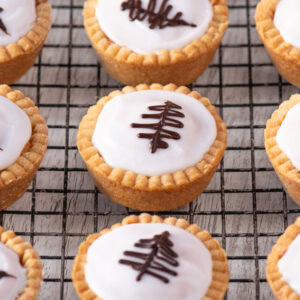
Fern Cakes
EQUIPMENT
- 12-hole Muffin Tin
INGREDIENTS
For the Pastry
- 175 g Butter or Block Margarine (at room temperature)
- 65 g Caster Sugar (Superfine Sugar)
- 250 g Plain Flour (All-purpose Flour)
- 150 g Raspberry Jam (Raspberry Jelly)
For the Filling
- 75 g Butter or Margarine (softened)
- 75 g Caster Sugar (Superfine Sugar)
- 75 g Ground Almonds
- 1 tbsp Self-raising Flour
- 1 Free-range Egg
For the Icing & Decoration
- 150 g Icing Sugar (Powdered Sugar)
- 1-2 tsbp Boiling Water
- 50 g Dark Chocolate
INSTRUCTIONS
For the Pastry
For the Pastry:
- In a large bowl, cream together the margarine/butter and sugar until light and fluffy. Sift in the flour and mix until a soft dough forms. Use your hands to bring it together if needed. Gently knead the dough, wrap it in clingfilm, and chill in the fridge for 30 minutes.
- Preheat your oven to 180°c (160°c fan-assisted ovens, Gas Mark 4 or 350°F). Grease a 12-hole muffin tin with a little excess margarine/butter, lightly dust with a little excess flour, and set aside.
- Roll the chilled dough to 5mm thick. Using a round cutter slightly larger than the muffin tin holes, cut 12 circles. Carefully transfer each circle to the greased tray, pressing it into place.
- Prick the base of each pastry cup, line with a paper cupcake case, and fill with baking beans. Bake for 10 minutes until partially baked.
- Remove from the oven, and carefully remove the baking beans. Spoon 1 teaspoon of raspberry jam into the base of each pastry case while still warm. Set aside to prepare the filling.
For the Filling:
- In a large bowl, cream together the margarine/butter and sugar until light and fluffy. Stir in the ground almonds and self-raising flour. Add the egg and mix until a smooth batter forms.
- Spoon the batter into the part-baked pastry cases, on top of the jam, filling them about ⅔ full.
- Return to the oven and bake for 15–20 minutes, or until the filling has risen slightly and is light golden. Leave to cool in the tray before icing.
For the Icing and Decoration:
- In a small bowl, mix the icing sugar with boiling water, adding a little at a time until you reach a thick but pourable consistency. You may not need all the water.
- Spoon the icing over the top of each cooled cake, filling to the edges but avoiding spills.
- Melt the dark chocolate (either in short bursts in the microwave or over a bain-marie), then drizzle over the icing in thin zig-zags. Drag a toothpick through the chocolate in one direction to create the fern leaf pattern.
- Allow the icing to set for at least 2 hours, or ideally overnight, before serving.
IMPORTANT NOTE:
All my recipes are developed using a digital scale and the metric system (grams and millilitres). Cup measurements are available as a conversion but these, unfortunately, won’t always be as accurate. For best results, I always recommend baking with a digital scale.
RECIPE NOTES:
- Storage: Once the icing has set, Fern Cakes can be stored in an airtight container at room temperature for up to 3 days. If your kitchen is particularly warm, keep them somewhere cool to stop the icing and chocolate from softening.
- Make Ahead: You can make the pastry a day or two in advance, just keep it in your fridge until ready to use. The full Fern Cakes are best assembled and iced on the day you plan to serve them.
- Freezing: Fern Cakes freeze well, even with the icing and chocolate. Pop them in a single layer in a container or wrap individually, then freeze for up to 2 months. Defrost at room temperature before serving.
- Substitutions:
- Pastry: You can use a ready-roll pastry if you prefer, or are short on time. But my sweet shortcrust pastry is definitely worth the effort, if you can.
- Jam (Jelly): You can swap raspberry jam for strawberry or blackcurrant, if you prefer.
Fern Cakes are traditional Scottish tarts, made with a sweet shortcrust pastry case, a layer of jam, and a soft almond frangipane sponge filling. They’re finished with white icing and feathered chocolate, with the pattern resembling fern leaves, hence the name!
Start by making a sweet shortcrust pastry and blind baking it in a muffin tin. Add a little raspberry jam, then top with almond sponge and bake again. Once cooled, cover with thick white icing and decorate with feathered chocolate lines to create the fern leaf design.
Homemade Fern Cakes have a lovely mix of textures and flavours. Crisp pastry, sweet and fruity jam, soft almond sponge, and a smooth icing top. If you like Bakewell-style bakes, like my Almond Slice, then you’ll love Fern Cakes!
In theory, yes. But I haven’t tried and tested it myself. I would replace the ground almonds with 50g Plain Flour and still use the 1 tbsp of Self-raising Flour. The lack of almonds will, of course, affect the overall flavour, but you could add a little vanilla or lemon extract to compensate for this.
Free-from & Vegan:
Gluten-free: The easiest way to make this a gluten-free Fern Cakes recipe is to use a gluten-free sweet shortcrust pastry and replace the tbsp of flour in the filling with a gluten-free alternative.
Nut-free: Ground almonds are quite an essential part of Fern Cakes, but you could experiment with using a little plain flour in their place. I would suggest 50g of plain (all-purpose) flour in place of the 75g of ground almonds. And still use the 1 tbsp of self-raising flour as per the recipe. The lack of almonds will, of course, affect the overall flavour of your Fern Cakes, but you could add a little vanilla or lemon extract to compensate for this.
Egg-Free: You can try replacing the egg in the frangipane sponge with a shop-bought egg replacer or using 1 tablespoon of ground flaxseed mixed with 3 tablespoons of water (let it sit for 5–10 minutes until gel-like). I haven’t tested this myself, but it should work well with the almond base.
Dairy-free: To make this a dairy-free Fern Cakes recipe, use a block-style dairy-free margarine for both the pastry and the sponge – something firm, like Flora Plant. Make sure your dark chocolate is dairy-free too (many are, but always check the label).
Vegan: To make these vegan Fern Cakes, you’ll need to use dairy-free margarine (as above) and replace the egg with an egg-replacer – either shop-bought or a flaxseed or chia seed egg alternative. You’ll also want to check your chocolate is vegan-friendly. I haven’t tested a fully vegan version yet, but the ingredients are fairly adaptable.
N.B. Any advice or suggestions to make recipes “free-from” or vegan are purely that – suggestions. Please be careful to double-check all ingredients individually, taking extra caution when serving to those with allergies & intolerances.
For more info on common food allergies, please see food.gov.uk | For more info on coeliac disease, please see coeliac.org.uk | For more info on a vegan diet, please see vegansociety.com
